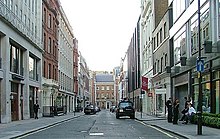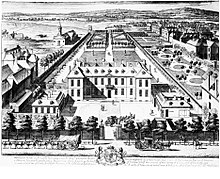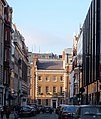
Mayfair is an affluent area in the West End of London towards the eastern edge of Hyde Park, in the City of Westminster, between Oxford Street, Regent Street, Piccadilly and Park Lane. It is one of the most expensive districts in the world.

Savile Row is a street in Mayfair, central London. Known principally for its traditional bespoke tailoring for men, the street has had a varied history that has included accommodating the headquarters of the Royal Geographical Society at 1 Savile Row, where significant British explorations to Africa and the South Pole were planned; and more recently, the Apple office of the Beatles at 3 Savile Row, where the band's impromptu final live performance was held on the roof of the building.
Gieves & Hawkes is a bespoke men's tailor and menswear retailer located at 1 Savile Row in London, England. The business was founded in 1771. It was acquired in 2012 by the Hong Kong conglomerate Trinity Ltd., which was in turn purchased by Shandong Ruyi in 2017. After Trinity was subject to a winding-up petition for debt in September 2021, Gieves & Hawkes was acquired in November 2022 by Frasers Group, owner of Sports Direct.
Sadie Coles HQ is a contemporary art gallery in London, owned and directed by Sadie Coles. The gallery focuses on presenting the work of established and emerging international artists. It was at the forefront of the Young British Artists movement.
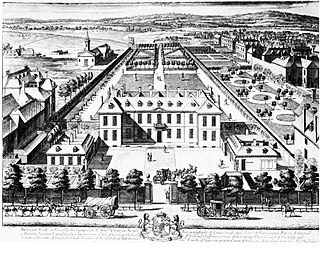
The Burlington Estate is an area in Mayfair to the north of Piccadilly in the West End of London, England. It was developed in the 18th century and owned by the Anglo-Irish Boyle dynasty, Earls of Burlington, in particular Richard, 3rd Earl of Burlington and 4th Earl of Cork (1694–1753).
Victoria Marion Miro is a British art dealer, "one of the grandes dames of the Britart scene" and founder of the Victoria Miro Galleries in London and Venice.
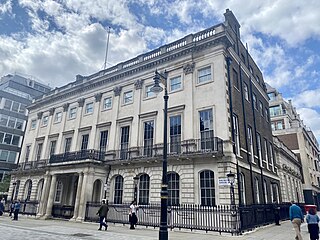
7 Burlington Gardens is a Grade II* building in Mayfair, London. Formerly known as Queensberry House, it was later called Uxbridge House. The building was home to the London flagship store of the American fashion retailer Abercrombie & Fitch.

The Burlington Fine Arts Club was a London gentlemen's club based at 17 Savile Row.

Richard James is a bespoke Savile Row tailors and contemporary menswear company. It was founded in 1992 by designer Richard James, a graduate of Brighton College of Art and a former buyer for the London boutique Browns, and his business partner Sean Dixon. Richard James has won both the British Fashion Council's Menswear Designer of the Year and Bespoke Designer of the Year awards.
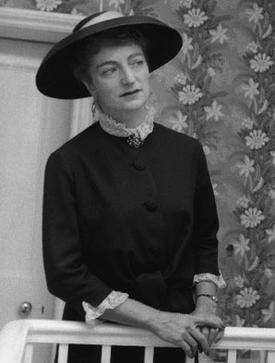
Lillian Gertrude Browse was a British art dealer and art historian. She was a partner in two London galleries, first Roland, Browse and Delbanco and then Browse & Darby. During the Second World War she organised exhibitions at the National Gallery, whose collections had been removed to the country for safety. She wrote a number of monographs on twentieth-century artists, including important works on Walter Sickert and Sir William Nicholson. She was nicknamed "The Duchess of Cork Street", and used that name as the title of her autobiography.

Savile Row tailoring is men and women's bespoke tailoring that takes place on Savile Row and neighbouring streets in Mayfair, Central London. In 1846, Henry Poole, credited as being the "Founder of Savile Row", opened an entrance to his tailoring premises at No. 32 Savile Row. The term "bespoke" is understood to have originated in Savile Row when cloth for a suit was said to "be spoken for" by individual customers. The short street has been termed the "golden mile of tailoring", where customers have included Charles III, Winston Churchill, Lord Nelson, Napoleon III, Muhammad Ali Jinnah, Laurence Olivier and Duke Ellington.

Fortress House was a building with its main entrance at 23 Savile Row in London W1, also including 5–9 New Burlington Street. It was built in 1949–50 to a design by Anthony Lloyd, and demolished in 2009.
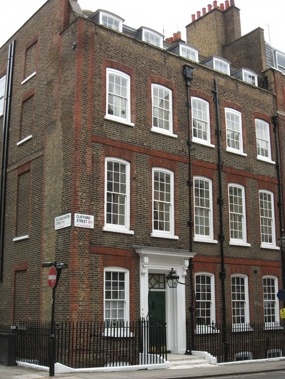
Clifford Street is a street in central London, built in the early 18th century, on land that once formed part of the Burlington Estate. It is named after the Clifford family, Earls of Cumberland. The daughter and heiress of the last holder of that title was the mother of the first Lord Burlington.
George Squibb was a British auctioneer, succeeding his father James, who founded the auction house of Squibb & Son, and working from public rooms in Boyle Street, facing down Savile Row, London, where the elder Squibb had set up in 1778. The grand rooms had been built in the 1730s, at the time Lord Burlington was developing the second phase of his real estate venture at the end of Burlington House gardens; they were extended by Squibb with a top-lit auction room. In 1813 he sold the collection of paintings of the late Duke of San Pietro. Among the country house auctions that fell under his hammer was that of the contents of Streatham Park, sold for Hester Thrale Piozzi in May 1816. Among those associated with Squibb was Michael Bryan, the connoisseur and author of the Dictionary of Painters
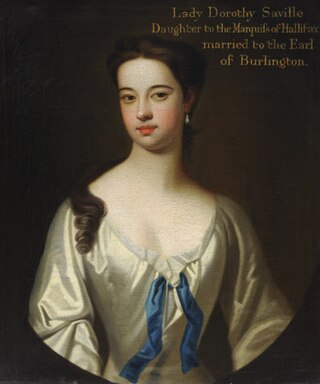
Dorothy Boyle, Countess of Burlington and Countess of Cork was a British noble and court official, as well as a caricaturist and portrait painter. Several of her studies and paintings were made of her daughters. Chatsworth House, which descended through her daughter Charlotte, holds a collection of 24 of her works of art.

Bury Street is a one-way street in St James's, London SW1. It runs roughly north-to-south from Jermyn Street to King Street, and crosses Ryder Street.

Chesterfield Street is a "virtually intact" Georgian street in London's Mayfair district. Several of the buildings are Grade II listed on the National Heritage List for England.

Waddington Custot is a London-based art gallery specialising in modern and contemporary art. Formerly known as Waddington Galleries, it has been situated on Mayfair's Cork Street since 1958.
The New Burlington Galleries was an art gallery at 5 Burlington Gardens, Mayfair, London.
